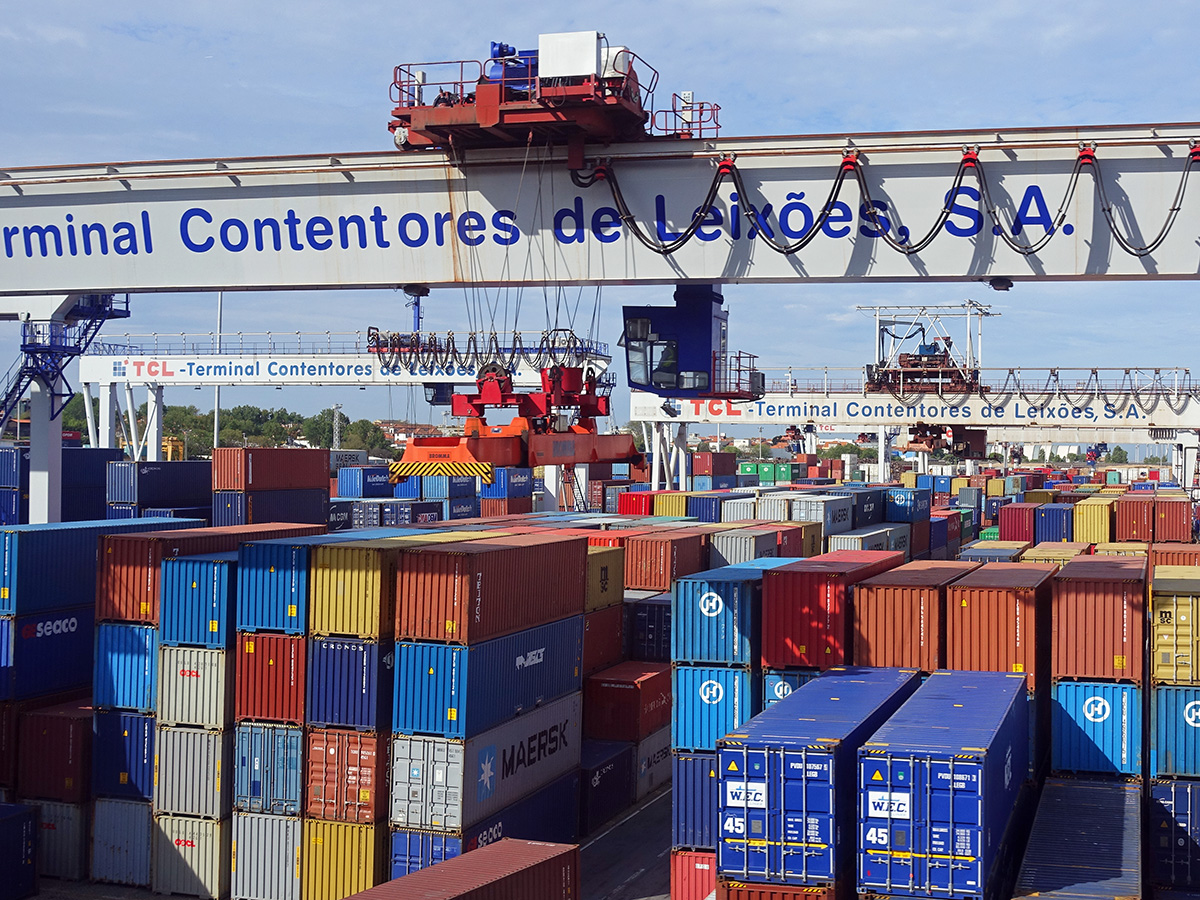 One of the key questions about Brexit is its effect on UK trade and cross-border investment. Once outside the customs union, will the freedom to negotiate trade deals lead to an increase in UK exports and GDP, as many who support Brexit claim; or will the increased frictions in trade with the EU, and the need to negotiate new trade deals with those non-EU countries which already have trade deals with the EU, lead to a fall in exports and in GDP?
One of the key questions about Brexit is its effect on UK trade and cross-border investment. Once outside the customs union, will the freedom to negotiate trade deals lead to an increase in UK exports and GDP, as many who support Brexit claim; or will the increased frictions in trade with the EU, and the need to negotiate new trade deals with those non-EU countries which already have trade deals with the EU, lead to a fall in exports and in GDP?
Also, how will trade restrictions or new trade deals affect capital flows? Will there be an increase in inward investment or a flight of investment to the EU or elsewhere? Will many companies relocate away from the UK – or to it?
Although there has been a cost up to now from the Brexit vote, in terms of a depreciation in sterling and a fall in inward investment (see the first article below), the future effects have been hard to predict as the terms on which the UK will leave the EU have been unclear. However, with a draft withdrawal agreement between the EU and the UK government having been reached, the costs and benefits are becoming clearer. But there is still uncertainty about just what the effects on trade and investment will be.
- First, the 585-page draft withdrawal agreement is not a trade deal. It contains details of UK payments to the EU, commitments on the rights of EU and UK citizens and confirmation of the transition period – initially until 31 December 2020, but possibly extended with mutual agreement. During the transition agreement, the UK would remain a member of the customs union and single market and remain subject to rulings of the European Court of Justice. The withdrawal agreement also provides for a continuation of the customs union beyond the transition period, if no long-term trade agreement is in place. This is to prevent he need for a hard border between Ireland and Northern Ireland.
- Second, there is merely a 26-page ‘political declaration‘ about future trade relations. Negotiations on the details of these can only begin once the UK has left the EU, scheduled for 29 March 2019. So it’s still unclear about just how free trade in both goods and services will be between the UK and the EU and how freely capital and labour will move between them. But with the UK outside the single market, there will be some limitations on trade and factor movements – some frictions.
 Third, it is not clear whether the UK Parliament will agree to the withdrawal agreement. Currently, it seems as if a majority of MPs is in favour of rejecting it. If this happens, will the UK leave without an agreement, with trade based on WTO terms? Or will the EU be prepared to renegotiate it – something it currently says it will not do? Or will the issue be put back to the electorate in the form of a People’s vote (see also), which might contain the option of seeking to remain in the EU?
Third, it is not clear whether the UK Parliament will agree to the withdrawal agreement. Currently, it seems as if a majority of MPs is in favour of rejecting it. If this happens, will the UK leave without an agreement, with trade based on WTO terms? Or will the EU be prepared to renegotiate it – something it currently says it will not do? Or will the issue be put back to the electorate in the form of a People’s vote (see also), which might contain the option of seeking to remain in the EU?
So, without knowing just what the UK’s future trade relations will be with (a) the EU, (b) non-EU countries which have negotiated trade deals with the EU, (c) other countries without trade deals with the EU, it is impossible to quantify the costs and benefits from the effects on trade and investment. However, the consensus among economists is still that there will be a net cost in terms of lost trade and inward investment.
Such as view is backed by a government analysis of various Brexit scenarios, released in time for the House of Commons vote on 11 December. This concludes that the UK will be worse off under all Brexit alternatives compared with staying in the EU. The main brake on growth will be frictions in trade from tariff and non-tariff barriers.
This analysis was supported by a Bank of England paper which modelled various scenarios based on assumptions about different types of Brexit deal. While recognising the inherent uncertainty in some of the empirical relationships, it still concluded that Brexit would be likely to have a net negative effect. The size of this negative effect would depend on the closeness of the new relationship between the UK and EU, the degree of preparedness across firms and critical infrastructure, and how other policies respond.
Articles
Reports
Documents
Questions
- Identify the main economic advantages and disadvantages for the UK from leaving the EU?
- How does the law of comparative advantage relate to the question of the relative trade gains from leaving and remaining in the EU?
- What is the difference between the following models of relationship with the EU: the Switzerland model; the Norway model; the Turkey model; the Canada (plus or plus, plus) model; trading on WTO terms?
- Why is the consensus among economists that there will be a net economic cost from leaving the EU, no matter on what terms?
- Is the UK likely to achieve more favourable trade deals with non-EU countries as an independent country or as a member of the EU benefiting from EU-negotiated trade deals with such countries?
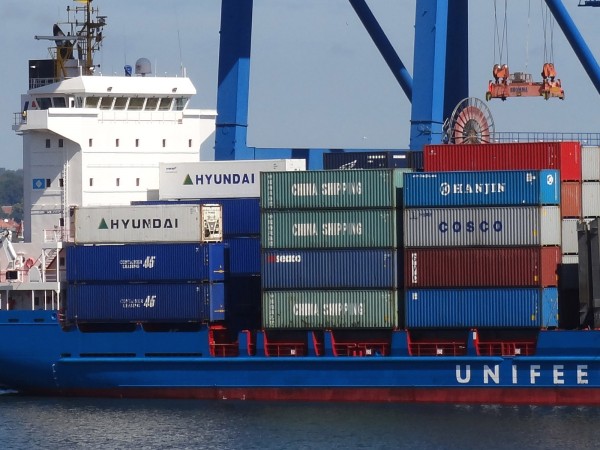 In the light of the Brexit vote and the government’s position that the UK will leave the single market and customs union, there has been much discussion of the need for the UK to achieve trade deals. Indeed, a UK-US trade deal was one of the key issues on Theresa May’s agenda when she met Donald Trump just a week after his inauguration.
In the light of the Brexit vote and the government’s position that the UK will leave the single market and customs union, there has been much discussion of the need for the UK to achieve trade deals. Indeed, a UK-US trade deal was one of the key issues on Theresa May’s agenda when she met Donald Trump just a week after his inauguration.
But what forms can a trade deal take? What does achieving one entail? What are likely to be the various effects on different industries – who will be the winners and losers? And what role does comparative advantage play? The articles below examine these questions.
Given that up until Brexit, the UK already has free trade with the rest of the EU, there is a lot to lose if barriers are erected when the UK leaves. In the meantime, it is vital to start negotiating new trade deals, a process that can be extremely difficult and time-consuming.
A far as new trade arrangements with the EU are concerned, these cannot be agreed until after the UK leaves the EU, in approximately two years’ time, although the government is keen that preliminary discussions take place as soon as Article 50 is triggered, which the government plans to do by the end of March.
Articles
Trade deals are difficult to negotiate and Britain lacks the skills for the job The Conversation, Nigel Driffield (27/1/17)
Why a U.S.-U.K. Trade Deal Could be Harder than it Sounds Newsweek, Josh Lowe (26/1/17)
UK-US trade deal will have ‘very small upsides’ for Britain, says former Bank of England economist Independent, Rob Merrick (26/1/17)
Trump says he wants a U.K. trade deal. Don’t hold your breath CNN Money, Alanna Petroff (23/1/16)
Reality Check: Can there be a quick UK-USA trade deal? BBC News, Jonty Bloom (16/1/17)
Questions
- What elements would be included in a UK-US trade deal?
- Explain the gains from trade that can result from exploiting comparative advantage.
- Explain the statement in the article that allowing trade to be determined by comparative advantage is ‘often politically unacceptable, as governments generally look to protect jobs and tax revenues, as well as to protect activities that fund innovation’.
- Why is it difficult to work out in advance the likely effects on trade of a trade deal?
- What would be the benefits and costs to the UK of allowing all countries’ imports into the UK tariff free?
- What are meant by ‘trade creation’ and ‘trade diversion’? What determines the extent to which a trade deal will result in trade creation or trade diversion?
 Theresa May has said that the UK will quit the EU single market and seek to negotiate new trade deals, both with the EU and with other countries. As she said, “What I am proposing cannot mean membership of the single market.” It would also mean leaving the customs union, which sets common external tariffs for goods imported into the EU.
Theresa May has said that the UK will quit the EU single market and seek to negotiate new trade deals, both with the EU and with other countries. As she said, “What I am proposing cannot mean membership of the single market.” It would also mean leaving the customs union, which sets common external tariffs for goods imported into the EU.
The single market guarantees free movement of goods, services, labour and capital between EU members. There are no internal tariffs and common rules and regulations concerning products, production and trade. By leaving the single market, the UK will be able to restrict immigration from EU countries, as it is currently allowed to do from non-EU countries.
A customs union is a free trade area with common external tariffs and uniform methods of handling imports. There are also no, or only minimal, checks and other bureaucracies at borders between members. The EU customs union means that individual EU countries are not permitted to do separate trade deals with non-EU countries.
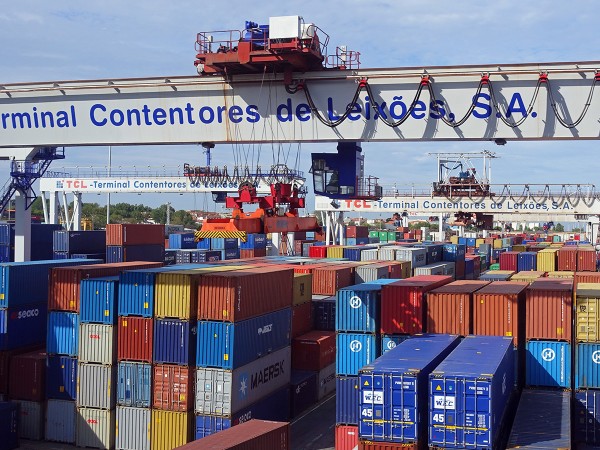 Once the UK has left the EU, probably in around two years’ time, it will then be able to have different trade arrangements from the EU with countries outside the EU. Leaving the customs union would mean that the UK would face the EU’s common external tariff or around 5% on most goods, and 10% on cars.
Once the UK has left the EU, probably in around two years’ time, it will then be able to have different trade arrangements from the EU with countries outside the EU. Leaving the customs union would mean that the UK would face the EU’s common external tariff or around 5% on most goods, and 10% on cars.
Leaving the EU single market and customs union has been dubbed ‘hard Brexit’. Most businesses and many politicians had hoped that elements of the single market could be retained, such as tariff-free trade between the UK and the EU and free movement of capital. However, by leaving the single market, access to it will depend on the outcome of negotiations.
Negotiations will take place once Article 50 – the formal notice of leaving – has been invoked. The government has said that it will do this by the end of March this year. Then, under EU legislation, there will be up to two years of negotiations, at which point the UK will leave the EU.
The articles look at the nature of the EU single market and customs union and at the implications for the UK of leaving them.
Articles
Britain to leave EU market as May sets ‘hard Brexit’ course Reuters, Kylie MacLellan and William James (17/1/17)
Brexit: UK to leave single market, says Theresa May BBC News (17/1/17)
How Does U.K. Want to Trade With EU Post-Brexit?: QuickTake Q&A Bloomberg, Simon Kennedy (17/1/17)
Brexit at-a-glance: What we learned from Theresa May BBC News, Tom Moseley (17/1/17)
Theresa May unveils plan to quit EU single market under Brexit Financial Times, Henry Mance (17/1/17)
Doing Brexit the hard way The Economist (21/1/17)
Theresa May confirms it’ll be a hard Brexit – here’s what that means for trade The Conversation, Billy Melo Araujo (17/1/17)
How to read Theresa May’s Brexit speech The Conversation, Paul James Cardwell (17/1/17)
Theresa May’s hard Brexit hinges on a dated vision of global trade The Conversation, Martin Smith (17/1/17)
Brexit: What is the EU customs union and why should people care that the UK is leaving it? Independent, Ben Chapman (17/1/17)
Questions
- Explain the difference between a free-trade area, a customs union, a common market and a single market.
- What arrangement does Norway have with the EU?
- How would the UK’s future relationship with the EU differ from Norway’s?
- Distinguish between trade creation and trade diversion from joining a customs union. Who loses from trade diversion?
- Will leaving the EU mean that trade which was diverted can be reversed?
- What will determine the net benefits from new trade arrangements compared with the current situation of membership of the EU?
- What are the possible implications of hard Brexit for (a) inward investment and (b) companies currently in the UK of relocating to other parts of the EU? Why is the magnitude of such effects extremely hard to predict?
- Explain what is meant by ‘passporting rights’ for financial services firms. Why are they unlikely still to have such rights after Brexit?
- Discuss the argument put forward in The Conversation article that ‘Theresa May’s hard Brexit hinges on a dated vision of global trade’.
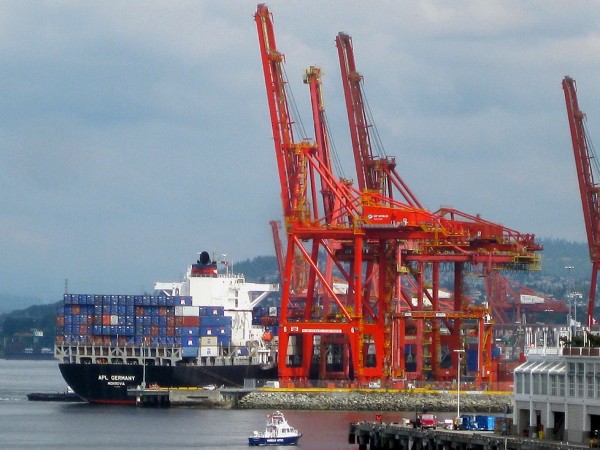 The 159 member countries of the World Trade Organisation have reached an agreement on liberalising trade. The deal, which was reached on 6 December 2013 at a meeting in Bali, is the first substantial agreement since the WTO was formed in 1995 (see Timeline: World Trade Organization for other agreements).
The 159 member countries of the World Trade Organisation have reached an agreement on liberalising trade. The deal, which was reached on 6 December 2013 at a meeting in Bali, is the first substantial agreement since the WTO was formed in 1995 (see Timeline: World Trade Organization for other agreements).
It involves simplifying customs procedures and making them more transparent, limited reductions in tariffs and quotas and allowing greater access to WTO members’ markets for exporters. It also permits developing countries to continue subsidising their agriculture in order to promote food security, provided the practice does not distort international trade. According to the WTO:
The trade facilitation decision is a multilateral deal to simplify customs procedures by reducing costs and improving their speed and efficiency. It will be a legally binding agreement and is one of the biggest reforms of the WTO since its establishment in 1995. …The objectives are: to speed up customs procedures; make trade easier, faster and cheaper; provide clarity, efficiency and transparency; reduce bureaucracy and corruption, and use technological advances. It also has provisions on goods in transit, an issue particularly of interest to landlocked countries seeking to trade through ports in neighbouring countries.
In a report published by the Peterson Institute in Washington, it is estimated that the extra trade will add some $960bn to world GDP and create some 20.6m extra jobs. 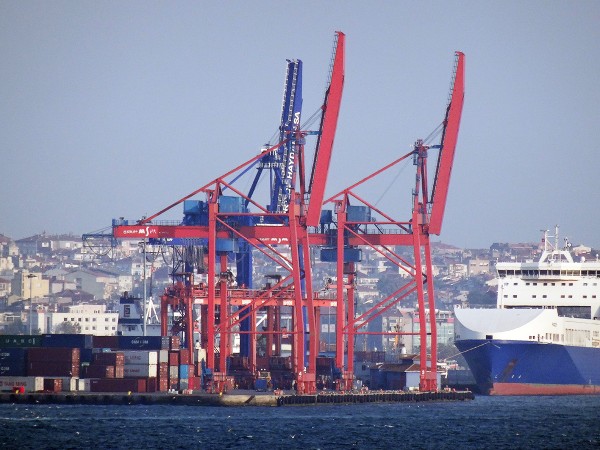 But how fully does it meet the objectives of the Doha Development Agenda, the yet-to-be-concluded trade round started in Qatar in November 2001?
But how fully does it meet the objectives of the Doha Development Agenda, the yet-to-be-concluded trade round started in Qatar in November 2001?
According to the EU’s trade commissioner Karel De Gucht, about one quarter of the goals set for the Doha Round have been achieved in this agreement. This, of course, still leaves a long way to go if all the Doha objectives are to be met. World trade, although now likely to be somewhat freer, is still not free; developing countries will still find restricted access for their agricultural products, and manufactures too, to many markets in the rich world; rich countries will still find restricted access for their manufactured products and services to many markets in the developing world.
Articles
A ‘lifeline’ to the world’s poor: Cameron hails WTO historic global trade deal Independent, Kashmira Gander (7/12/13)
Timeline: World Trade Organization BBC News (7/12/13)
WTO Seals Deal for First Time in 18 Years to Ease Trade Bloomberg, Neil Chatterjee, Brian Wingfield & Daniel Pruzin (7/12/13)
WTO agrees global trade deal worth $1tn BBC News, Andrew Walker (7/12/13)
WTO: Government’s tough stand helps clinch deal in its favour Economic Times of India (7/12/13)
India Inc, exporters welcome WTO pact on trade The Hindu, Sandeep Dikshit (7/12/13)
WTO: Pact will help poor Bangkok Post (7/12/13)
WTO overcomes last minute hitch to reach its first global trade deal NDTV Profit (7/12/13)
WTO reaches ‘historic’ trade deal in Bali Aljazeera (7/12/13)
 WTO agrees global trade deal worth $1tn BBC News, Karel De Gucht (7/12/13)
WTO agrees global trade deal worth $1tn BBC News, Karel De Gucht (7/12/13)
Why the WTO agreement in Bali has finally helped developing countries The Guardian, Paige McClanahan (6/12/13)
WTO agreement condemned as deal for corporations, not world’s poor The Guardian, Phillip Inman (7/12/13)
Bali trade agreement: WTO set the bar high but has achieved little The Guardian, Larry Elliott (6/12/13)
Reports and documents
Payoff from the World Trade Agenda, 2013 Peterson Institute for International Economics, Gary Hufbauer and Jeffrey Schott (April 2013)
Days 3, 4 and 5: Round-the-clock consultations produce ‘Bali Package’ WTO (7/12/13)
Draft Bali Ministerial Declaration WTO (see, in particular, Agreement on Trade Facilitation) (7/12/13)
Questions
- According to the law of comparative advantage, there is a net gain from international trade. Explain why.
- What are the likely gains from freer trade?
- Is freer trade necessarily better than less free trade?
- Who is likely to gain most from the WTO deal reached in Bali?
- What were the goals of the Doha Development Agenda?
- In what ways does the Bali agreement fall short of the goals set at Doha in 2001?
- Why is it so difficult to reach a comprehensive international deal on trade liberalisation that also protects the interests of poor countries?
- Do you agree with the World Development Movement (WDM) that the Bali Package is “an agreement for transnational corporations, not the world’s poor”?
- Would it now benefit the world for individual countries to pursue bilateral trade deals?
 One of the key questions about Brexit is its effect on UK trade and cross-border investment. Once outside the customs union, will the freedom to negotiate trade deals lead to an increase in UK exports and GDP, as many who support Brexit claim; or will the increased frictions in trade with the EU, and the need to negotiate new trade deals with those non-EU countries which already have trade deals with the EU, lead to a fall in exports and in GDP?
One of the key questions about Brexit is its effect on UK trade and cross-border investment. Once outside the customs union, will the freedom to negotiate trade deals lead to an increase in UK exports and GDP, as many who support Brexit claim; or will the increased frictions in trade with the EU, and the need to negotiate new trade deals with those non-EU countries which already have trade deals with the EU, lead to a fall in exports and in GDP? Third, it is not clear whether the UK Parliament will agree to the withdrawal agreement. Currently, it seems as if a majority of MPs is in favour of rejecting it. If this happens, will the UK leave without an agreement, with trade based on WTO terms? Or will the EU be prepared to renegotiate it – something it currently says it will not do? Or will the issue be put back to the electorate in the form of a People’s vote (see also), which might contain the option of seeking to remain in the EU?
Third, it is not clear whether the UK Parliament will agree to the withdrawal agreement. Currently, it seems as if a majority of MPs is in favour of rejecting it. If this happens, will the UK leave without an agreement, with trade based on WTO terms? Or will the EU be prepared to renegotiate it – something it currently says it will not do? Or will the issue be put back to the electorate in the form of a People’s vote (see also), which might contain the option of seeking to remain in the EU?




